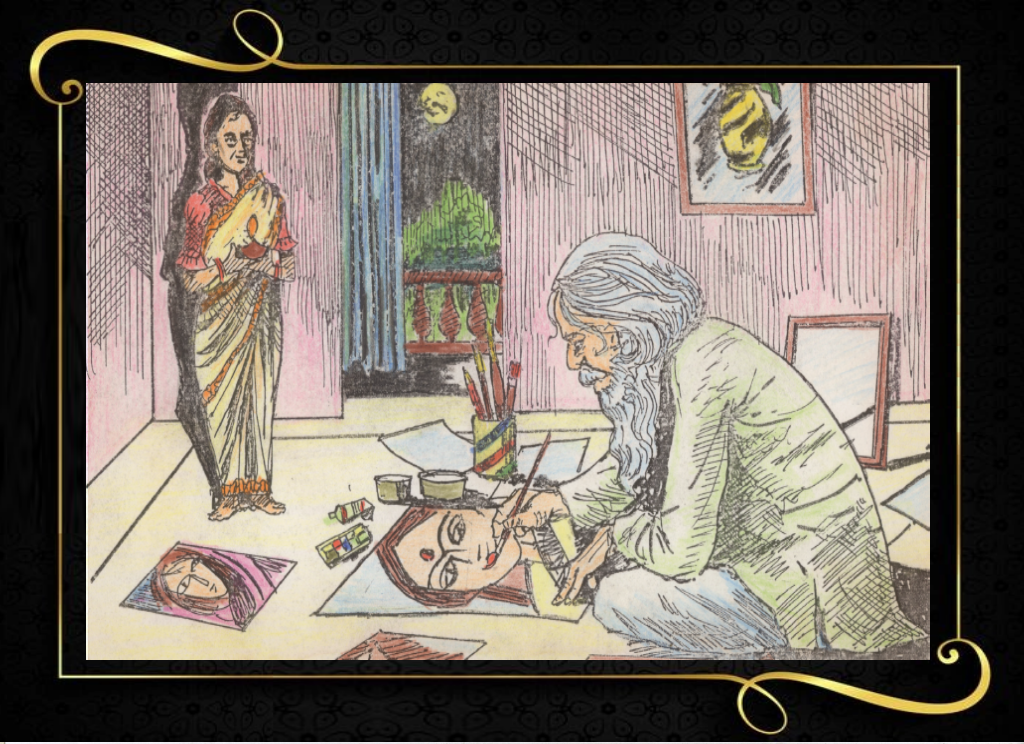
One midnight, like a blazing flame of fire a brightest star of the starry blue heaven came down on this holy earth and entered inside the womb of a woman belonged to one of the high-born families of the Thakur Palace in Jorashako, Kolkata. After nine months or so in an auspicious moment of time the child in the womb separated himself from the navel of his mother and stepped outside in this world with a lustrous appearance. The illuminated soul was none other but Sri Rabindranath Tagore. The parents were Maharshi Debendranath Takur and his wife Sarada Devi.
For the first decade or so Tagore remained distant from his parents almost and was growing up under the blunt administration of the servants, like a bird in a cage. He was deprived of mother’s breast-milk and her love too. He was confined mostly to the family compound and forbidden to leave it for any purpose other than traveling to school,which made him increasingly restless for the outside world, open spaces and nature. The little soul was in thirst of love and complete freedom to blossom.
Kadambari entered Thakur Palace as a bride of Jyotirindranath Tagore, Rabindranath’s elder brother. When she was nine, Tagore was seven. She became Tagore’s childhood companion and they both grew up together. After the death of his mother their friendship turned into a motherly affection and gradually transformed into a romantic relationship.
When Tagore turned 22 he got married to Mrinalini, under the strict order of his father, who was 11 year then. Kadamvari never wanted Tagore to get married.
She was depressed with this marriage due to the fear that she would lose her all right on Tagore. The distance between the two souls started widening up unwillingly because of the then prevailing situation. But,how could a forceful marriage alienate two soul mates from each other, except death.
Kadamvari committed suicide by consuming opium and left her earthly body for a heavenly journey in search of another garden of love where she would wait for her fiancé ‘Bhanu’ alias ‘Ravi’ to reunite, perhaps.
Ravi was puzzled due to such unthinkable separation from his love-bird and was sunk into a river of unbearable pains. The bird started roaming over the mountains to the valleys, rivers to the lap of nature- everywhere, in every sphere of life in search of his lost queen. The tears from the wounds in his heart started flowing through his pen on the pages of his poetic creations and continued to walk on. And Mrinalini, his legitimate wife, could easily realise by her feminine instinct of mind the blazing romanticism of a platonic love between these two inseparable souls. She accepted the reality and made herself indispensable before her husband by her love and self-sacrifice. She went on rendering her homage to the husband and selfless service to the family without any protest, demand, criticism, sarcasm and above everything without any expectation. She had a lighted lamp in her hand to illuminate the darkness whenever came down in poet’s life and at the same time a burning fire of sorrow at the bottom of her own heart.
The life of Tagore was like a red sea. There were ripples of untimely deaths of his most beloved people, waves of financial distress, wavelets of unnecessary criticism and character assassination, which put him into the mud of depression times and again. Nevertheless the poet fought back to come up from all constraints, hurdles and unfortunate situations all the time. Sitting on the shore
of his distressful life he went on creating his poetic treasure one after another. In support of his realisation about life against such series of misery and misfortune in his life he wrote:
“There is sorrow, there is death, and pain of separation persists;
Still, let the peace prevail, let the joy dance, eternity spread its wings.
Still, the life flow, the sun rises, the moon and the stars smile,
In the wilderness of the spring, let the music run in different rhymes.
As the wave dies, new wave evolves,
With the flower falls of, new flower blossoms.
There is no decay, no end, no iota of unhappiness,
Let the head fall upon the feet of completeness.”
